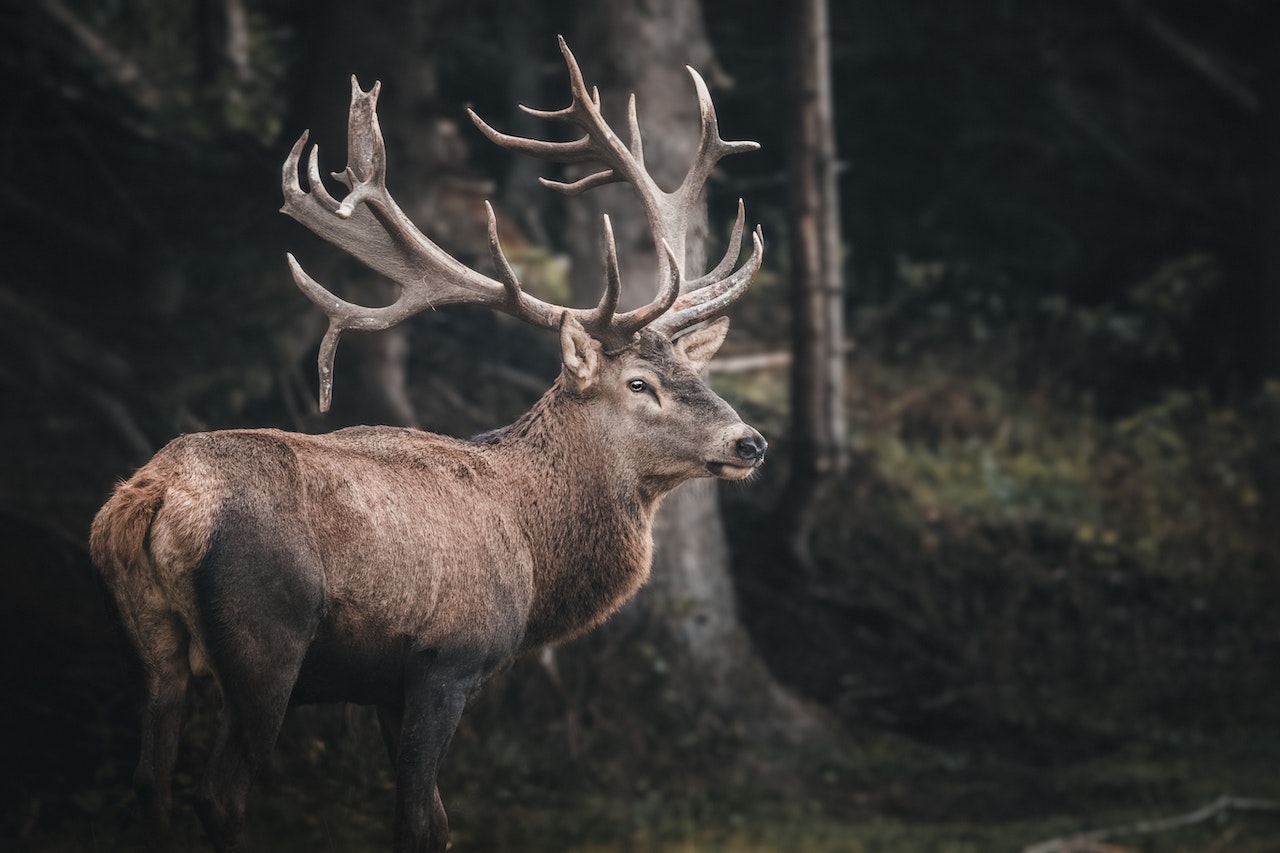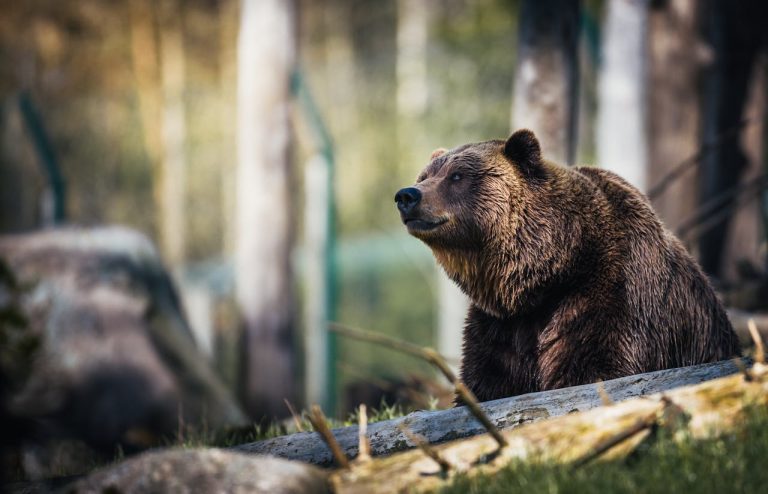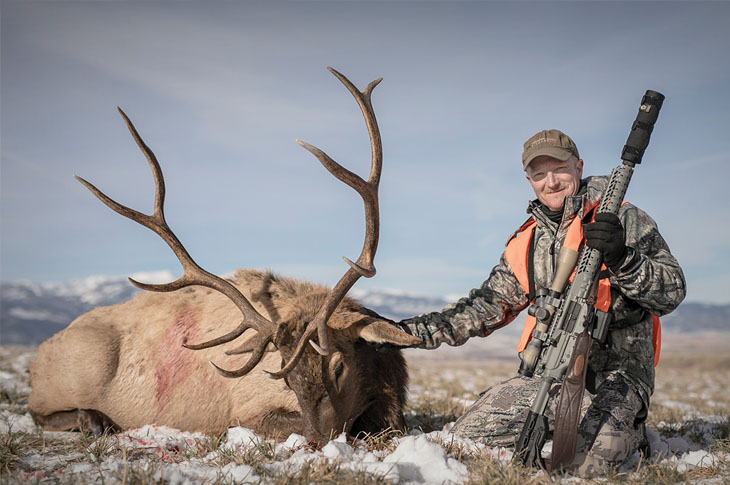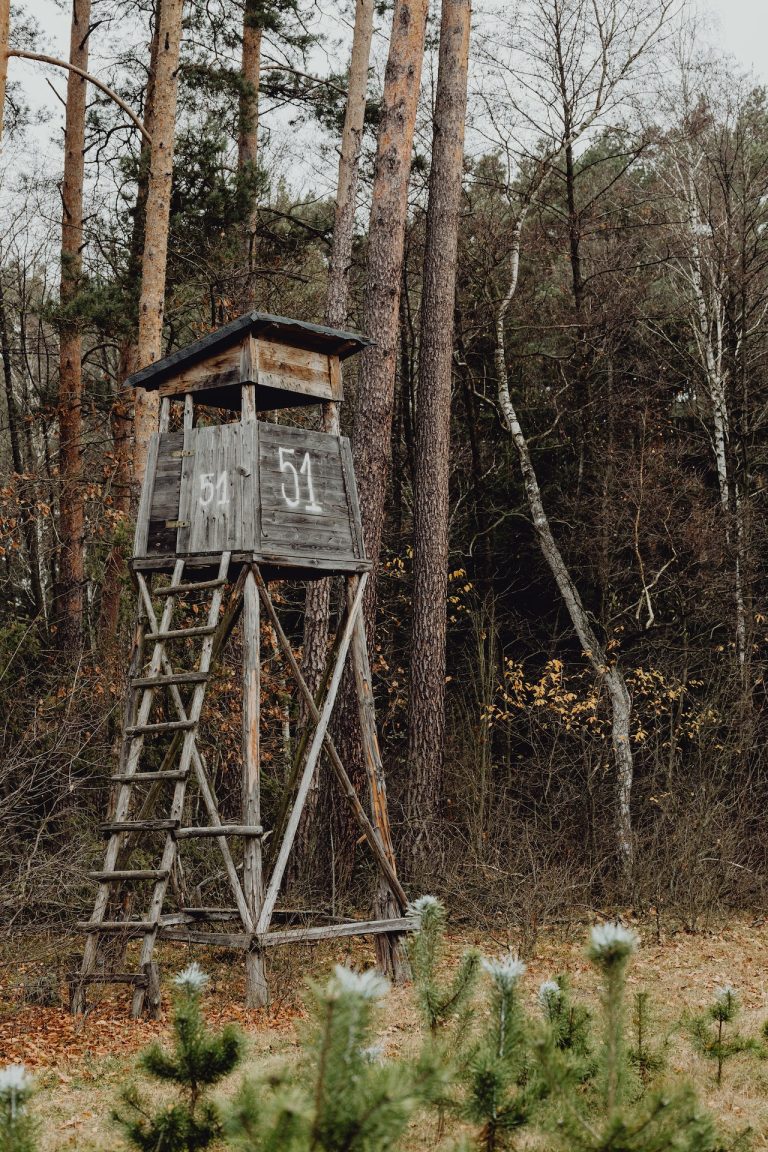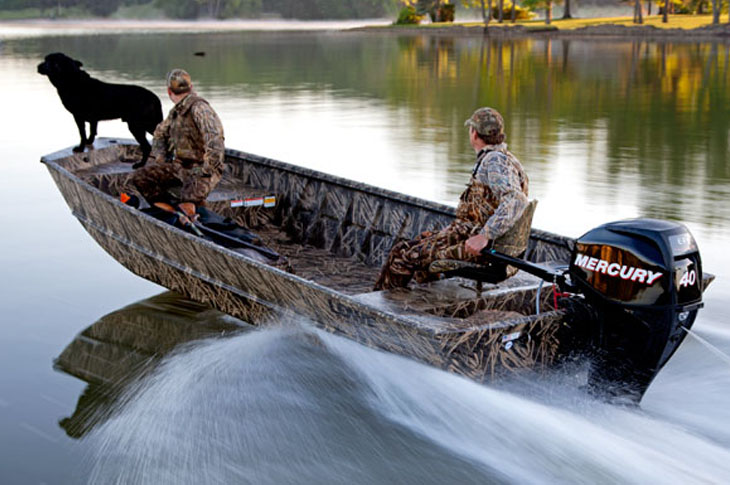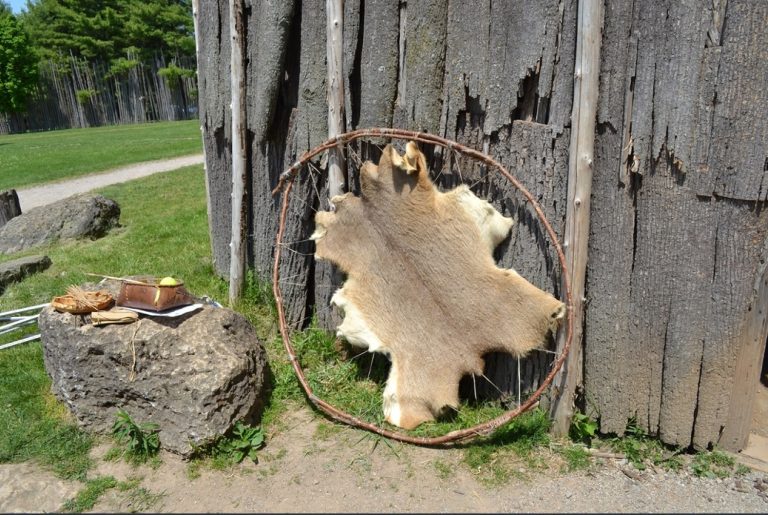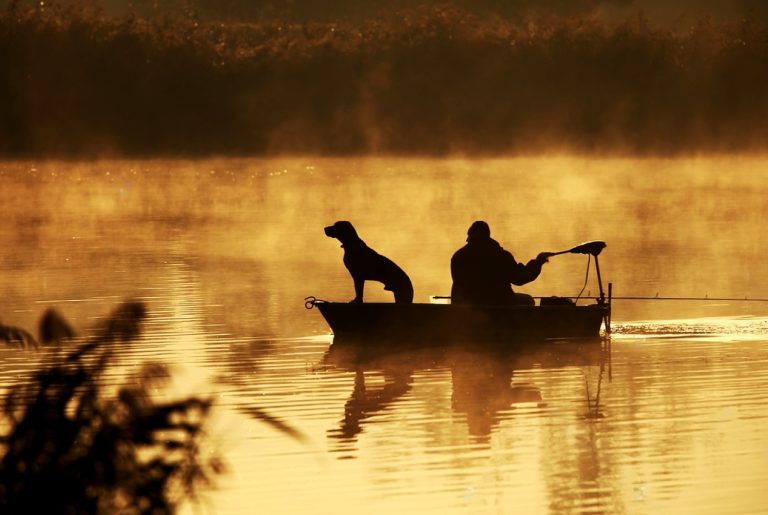Have you ever wondered what makes mule deer hunting extremely widespread in the world, especially in Americas? Or which elements impact directly on an effective mule deer hunting trip?
Mule deer are usually a piece of a hunter-driven conservation success story. This deer species can be found everywhere, but most widely distributed in dense forests from Maine to Washington, and Manitoba to Peru.
For many years, lean mule deer venison is well-known for its mild flavor and health benefits as well. We can have a full belly with marinated venison, venison chili, or grilled deer heart, etc. Moreover, deer meat can lower testosterone level, and homocysteine build-up in the blood, decreasing the risk of heart attacks and strokes, and much more.
But, in fact, it may be a small fortune to pick the ground to hunt deer. Hundreds of hunters have realized that their deer hunting trips are significantly more challenging to reach the target. The mature ones are the most intelligent hard game animals out there. A buck’s majority with impressively big antlers will take the huge difficulty to kill him.
Out of that, communing with nature also directly affect on your spirits. Mule deer hunting seems to be generally more difficult, but the reward you get can be sweet, huh? That’s largely why we’ve released this definite guide to help you to increase your chances of success and have fun in the effective mule deer hunting trip.
But first…
Let’s take a look at the general information of the deer species.
Quick Navigation
Mule Deer Background
Found from southern Canada to South America, mule deer is the smallest member of the North American deer family. They stand three to three and one-half feet tall at the shoulder. Adult bucks weigh 150 – 250 pounds, while adult does weigh 100 – 150 pounds. During the summer, the fur of both sexes is reddish brown to tan, and in the winter is grayish-brown. Fawns have a reddish coat with white spots which they molt at 3 – 5 months of age. Typically only males grow antlers. Unlike horns, new antlers are grown and shed each year. Antlers will grow in early spring and be shed as early as December. But deer with good genetics and proper nutrition may retain their antlers well into March.
Where to Meet Them
The key to successful mule deer hunting is to determine the areas that they thrive in. If you want to pick a big, old one, you have to seek out areas that are more remote and hard to access. Let’s go on to find the ideal ones to hunt.
Geography
You have always bumped into many guides about hunting deer, but the best piece of advice you’ll get is: Hunt deer where they live. Facetious, right? Meanwhile, during the summer, mule deer typically inhabit fields and meadows by using clumps of broad-leaved and coniferous forests for shade. In the winter, they generally keep to forests, preferring coniferous stands which provide shelter from the harsh elements. True, finding the exact place to hunt deer seems to be one of the most difficult tasks of the hunt. But don’t worry about it, because hunting deer on public land will be the only option for you. You may feel at a disadvantage, huh? The public land hunting is more tricky, that’s right, but the reward will be so sweet with a little legwork.
It’s quite easy to find a public area to hunt. Nowadays, many game agencies offer sites dedicated to helping hunters to find accessible areas. They may be traditional publicly-owned, or privately-owned but open to public hunting. Lands owned by local units of government are also nice suggestions with less pressure for you, as they’re not well-known.
Food sources
Apart from geographical locations, a mule deer’s movements are dominated by food sources. The head of a mule deer is sharply pointed to reach into plants and selecting specific plant parts. Mule deer have the long and slender tongue, allowing them to extract succulent stems and leaves.
Mule deer foods can be classified as browse (leaves, twigs of woody plants), forbs (weeds), grasses, nuts and fruits, and mushrooms. Regardless of the time of year – early season, late season, even the rut – a deer’s dietary requirements and preferences will change.
- Browse. Natural browse is the mainstay food item of deer. Within reach of deer, shrubs or young tree can be deer food. Browse plants may lose their leaves because of drought or cold weather, but the stems and twigs still contain nutrition.
You, sometimes, think that any blocks of trees provide full of seeds, berries that fill a mule deer’s daily diet. But you’re mistaken. Old-growth hardwood forest may provide much better cover, but not the browse.
- Mast. Generally called mast with high energy sources, nuts, acorns and fruits are significantly important to a mule deer’s fall diet. The US is covered with about 60 species of oak, but white oaks are preferred to others because the acorns they produce have a bitter flavor. Acorns are high in fat and carbohydrates, but low in protein, while chestnuts are high in protein and carbohydrates. Deer prefer chestnuts to acorns because chestnuts contain fewer tannins, which inhibit digestion.
Thanks to a high-energy source rich in carbohydrates, fruits (grapes, blackberries, mulberry, and plums) are used by deer during antler growth. In the fall, deer are storing fat for the winter, apples and pears can provide needed energy.
- Crops. An area having natural browse, cover, and water can meet the mule deer habitat requirements. In the East areas, however, the mast-producing trees are quite rare. That’s why mule deer tend to live in farm country, with the food source from crops. Row crops like corn and soybeans attract more deer in Midwestern states. Of course, the way deer use crops will also change during the season, especially in harvest seasons. Generally speaking, the presence of row crop have a huge positive impact on the number of deer.
- Grass. Unlike cow’s’ rumen holding at least 49 gallons of plant and liquid material, bacteria, protozoa, yeasts and other organisms, a mule deer rumen has about 2 gallons and replenish food every 3-4 hours to maintain a much less diverse and more specialized rumen flora and fauna. On the other hand, grasses are the most fibrous and indigestible of plants, so grasses rarely are a favorite food item of mule deer. The grass is only digestible during the early growth stages.
- Mushrooms. Lastly, delicacy mushrooms are usually overlooked for what mule deer eat. Mushrooms supply the second most important element, including phosphorus, and protein. The naturally produced amount of mushrooms per acre will make you surprised. Locating concentrations of mushrooms can help you find feeding areas.
When to Meet Them
“Three days at the right time beats three weeks at the wrong time.”
Choosing the best times to hunt deer may take a little planning. You have to check your state’s food resources, and the lunar calendar as well. For example, taking a look at deer feeding charts can bring insights into the best time to hunt. Many hunters believe that hunting during the moon’s third quarter phase is one of the very best times. Especially, the mid-season (ruts) is the time when the deer are most active, but earlier or later in the season are also great times because deer follow predictable patterns, and there are fewer hunters out during those times.
Pre, mid, or post-rut?
Deer behavior has changed during each phase of the season. In the pre-rut, September turning to October, the predictable groups of bucks are breaking up, and each individual establishes territories for the fall with rubs and scrapes. So you can find them to get a particular buck’s routine.
Food sources are also changing. Because of chilly nights and shorter days, the abundant green browse is killed off, soybean fields are yellowing, acorns are falling. So, this time is the toughest of all to hunt.
But in the pre-rut, deer must focus on what’s available. Harvested corn fields, food plots, or mast become more attractive. The weather is improving with chilly days, avoiding mosquitoes. It’s a glorious time to be in the woods.
If there is the best time for mule deer hunting, it should be the rut. It’s when bucks run across the landscape to search does for breeding. But not all does will be ready to breed at that time. So, that require you to associate with the rut. It begins in mid-October toward the end of the month, or the second week of November. This period is actually pre-breeding, and bucks are into a frenzy. That’s why in the rut bucks are moving most often. Until mid-November, most does will be ready to breed. Now bucks will stay with a doe they’re breeding for about two days, and only move when its partner moves.
For the post-rut phase, it’s considered the late season. When completing the breeding, the deer’s concerns now are for food and safety. Then does, fawns and bucks will hang out together, bedding and feeding in the same places. But these deer have full of hunting pressure, so they will be reluctant to move in daylight.
Morning or evening?
In fact, bucks are often caught off guard when the sunlight reaches the treetops after being carousing all night. At that time, mule deer have quick steps to focus on heading back to secure bedding cover. Because of doing this in a rush, they take more risks than usual. The first two hours of daylight are peak movement times for bucks to cruise for does during the rut. Besides, hunting near bedding areas is productive in the morning, you can sneak into a treestand with ease. Also, you can get in some places easier without being detected in the early morning.
However, a light, even the smallest one, can be detected by mule deer from a long way. Many studies indicated that deer’s eyes can pick up about 50 times as much light as ours do. In the early season, without any pressure, bucks take time getting back to the bedding areas. But when the hunting pressure increases, they will get pretty edgy if caught out in the morning.
Unlike the early morning, mule deer evening movements are often coordinated and visible as they move at once. On top of that, you can sneak into your stand location. During the daylight, you can get yourself several hours to allow your scent to dissipate somewhat.
But when nighttime settles in, your odds of shooting one from the only stand significantly diminish. Mature bucks with very good memories will not give you any chances. They can’t appear in that location for the rest of season. So, tracking your deer in the dark will become harder.
In short, picking your hunting time wisely, or having a big-zero result. You have only a few times at the particular location to make it happen. Whether it’s pre-rut, rut, or post-rut, morning or evening, consider carefully, don’t waste your hunts at the wrong time.
Start an Effective Mule Deer Hunting Trip
Mule deer hunting is actually a practical skill. Thus, carefully researching and preparing will decide the effectiveness of your hunting trip. The more careful the preparation is, the sweeter the result is. So you should take it seriously.
Before the Hunt
Get the permission
This is one of the priority to experience an effective mule deer hunting trip. For any public hunting areas, you have to get the necessary permits from regulatory bodies, like Department of Environmental Conservation Office or Department of Natural Resources. The only thing you have to do is to visit their website to know about all the information on permits, including the lasting of the season, the number of tagged deer, kind of tagged deer, safety regulations, etc. The permit may cost from $40 to $200, depending on the hunting location.
Of course, make sure that you also understand the state’s laws concerning firearms which are the most popular form of deer hunting. The law only allows you to use 20-gauge shotguns or larger shotguns with slugs or buckshot, muzzleloading firearms of .44 caliber or more, and center-fire firearms. For hunting deer, shotguns shall be limited to a capacity of not more than five shells in the magazine and chamber combined. Remember that! For more detailed information, get accessed to the local websites. Please follow the law, or consider bowhunting instead of that.
Prepare your clothing
You think clothing is trivial? Not true. It is significantly important than you think. Keep warm in the extreme conditions, deal with other hunters, blend in the forest, or comfortably sit for a long time. Thus, choosing the best and most comfortable clothing will make your trip effective.
- Three-layer or more? Depending on geographic location and season, you should choose clothes accordingly. Three layers of clothing will be the best for you. Of course, more may be needed in more extreme conditions. The first layer is extremely important because it has to be snug fitting and wick moisture away from your body. Now you have many options among hi-tech materials, maybe wool, or fella, which deals with all that itching and scratching. The next layer should be typically a fleece which is good breathable, light-weight during warmer periods. For the last layer, make sure that it’s wind and waterproof. You can put this layer in a day pack until needed.
- Accessories, why not? Three additions which should not be overlooked are hat, gloves, and boots. They are also essential like clothing. Your boots, for example, you should choose materials that both keep your feet warm and resist water. If not, you will feel ill-at-ease during the hunting trip.
Besides, you also need a thick foam hot seat when you sit in the woods in very cold, raining or snowing weather. You saw and fasten an eight-inch loop to your hot seat and clamp it on the back of your pants. Quite easy, right? You also have need of a trusty pair of binoculars to spot the deer before they’re in range. Finally, consider bringing a bag kit with a flashlight, compass, etc.
- Carefully considered color. Hunters usually worry that the orange color will give them away to the sharp eyes of deer. In fact, deer cannot see very well as we thought. For deer, orange likely appears brown or gray. But they’re more sensitive to blue wavelengths than humans. Thus, some states even require how much orange hunters need to wear to ensure the safety for hunters.
Research the location
To hunt big bucks that are smart, you should find out where they roam. It should be the densest, most inhospitable places without human’s tread. Or shady, higher-altitude places and thick creek bottoms where bucks tend to bed and rest. Also, you have to set up your climbing tree stands by hoisting a simple wooden platform high enough up onto a tall tree.
During the Hunt
Identify deer signs
- Simple hoof prints: First of all, let’s find out the actual hoof prints which mule deer leave behind when they walk. It’s quite easy to see with the ovular shape and independent dots made from small claw prints, especially in mud or softer areas. With these tracks, you can figure out where deer are traveling for bedding, feeding, or drinking. Even hoof prints can give you more information about the size and gender of the deer.
- Trails: Like human moving, pathways will be beaten down into clear trails, deer also beat down the earth and grass enough to leave behind visual proof of their movements.
- Droppings: Funny, right? In fact, deer droppings can be worth for your hunt by judging the freshness of droppings. Besides, a large concentration of droppings in one place also show that it’s close to a bedding area.
- Rubs: Bucks will rub on small trees to mark their territory. If you see it, this means a buck is in the near vicinity. On top of that, rubs can identify the size of bucks. The higher rubs are, the bigger buck is. By contrast, the closer to the ground rubs are, the younger buck is.
- Bedding areas: This is an especially important sign you should take note. With it, you can draw out deer travel patterns and pick proper stand locations. To look for these spots, you need to focus on concentrations of droppings or rubs, small, subtle depressions in the grass, leaves, or pine needles as well.
Note: Make sure that your odor is concealed when you hunt. With amazingly keen senses, deer can easily detect you. Baking soda is the easiest and cheapest solution for you. Use the mixture of baking soda and unscented soap before the hunt. Or put some in your boots.
Make the Shot
If you’ve covered your scent, after making appropriate calls, be patient, because your buck will pass a very short distance in front of you. Remember that don’t take a far-off shot, you may lose your chance. The perfect distance to shoot to kill is within 20 – 30 yards (18.3 – 27.4 m).
Stand up? Forget it. You always try to stand up when the deer is approaching. But standing is a very unstable position to shoot in. The prone, sitting, or kneeling position is better for you to shoot.
Stay quiet. It’s important to be as still as possible while you are ready to shoot. Of course. This will depend on the kind of weapon you’re using. With a gun or crossbow, make sure your weapon fully loaded with the safety on. Flip the safety off. And pull the trigger. Meanwhile, if you use a bow and arrow, you should stand up to improve your form and create more types of shots that you can take.
Where to aim? The right spot is a flexible concept. Most of us were taught to put a bullet in the heart or lungs. But it depends on distance, bullet type, and shoot ability, etc. Here’re the best places you should make the shot to.
- High shoulder: A big, fast-moving bullet will snap the spine, break ribs, shorten the nervous system, and anchor a deer with authority. But this shot can damage lots of meat, from shoulder through the neck and upper back strap.
- Heart-lung: This creates massive hemorrhaging, so you can find and follow the blood trail easily. However, after being shot to a part of a single lung, the deer don’t go down immediately, and they can recover.
- Brain: This is a tiny and difficult target. Take a direct hit to the deer’s brain, it will die instantly with a little meat lost.
- Neck: The deer will be killed with massive shock to the spinal cord and vertebrae without damaging lots of meat.
After the Hunt
Once hit the deer, you have to pinpoint where the deer was shot to find out the general direction the deer was heading in. But first, try to settle your nerves and do nothing for about 25 minutes. This will allow the deer to lie down and possibly bleed out. When you follow the deer right away, adrenaline will kick in. At that time, the deer could travel much farther than he might.
To find the deer, throwback to the position where it was standing the last time you saw it. And then go directly to there and place a marker. Now look for blood trail. To do this, you can use hydrogen peroxide in a spray bottle and mist an area lightly. Blood will foam up. If not, you should choose a handy fluorescent light to spot blood, especially at dusk or dawn, a lot easier.
The blood color will help you to determine which part of deer you hit. If it’s a lung shot, the blood will be bright, pink, frothy with bubbles. Thus, the deer can’t go far. Meanwhile, rich, vivid and red blood will show a shot to the heart or an area with multiple blood vessels. A marginally hit or nicked organ may take a while for the deer to die. Dark, crimson blood indicates a liver or kidney shot which is fatal. Or if you find blood with plant matter or food mixed, or yellowish-green tint to it, it suggests a stomach hit. You have to wait at least half a day before tracking.
However, sometimes you won’t find any blood trail immediately. For example, if an arrow doesn’t pass through the deer, it may not bleed profusely until the body cavity fills with blood, draining from the entrance wound. At that time, hair can give you a suggestion of where the deer was hit. Dark, coarse, hollow hair indicates a high hit. The hair on the side of the deer, which is thinner, brown, will signal a good hit. White hair is not good. It means a low shot, but it could indicate an exit wound from a high-angle shot. Silky, white hair and bone fragments indicate a brisket shot. Such a deer can die or not.
When you find the deer, you tend to walk up to it, right? But the advice is: DON’T RUSH TO CATCH IT. Why? It may be pretended. Your deer can jump up and run away. To know exactly whether it died or not, look at the eye. If it’s open, it’s dead. Otherwise, you have to use caution. Gently touch to its eye to see if it blinks.
Note: As soon as you know it’s dead, cut its throat to remove the excess blood from the veins. This will make the meat have less bloodshot veins.
Now you can enjoy the sweet reward!
Make Your Own Hunting Trip
By now, we believe that you can control your hunting trip with effective skills and tips. The bottom line is; mule deer hunting is just a practical skill and someone can wake up and do it perfectly. Time and places for hunting deer, as well as the way to make a shot, track blood and hair highlighted in this article, are some of skills which you should learn and practice to make your hunt an impressive experience.
Have you gained something useful for your hunting skills from this article or any other sources? Please feel free to share your experiences in hunting.

